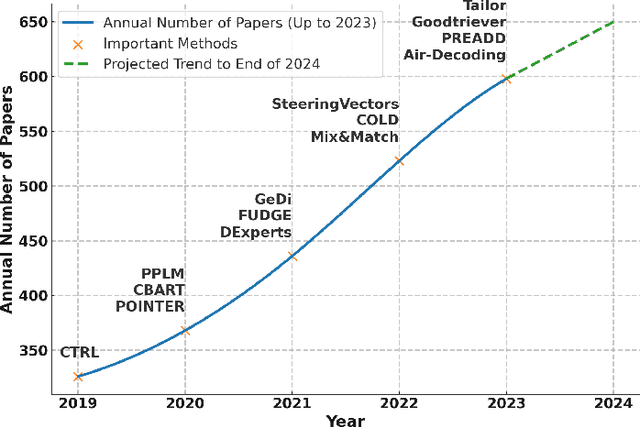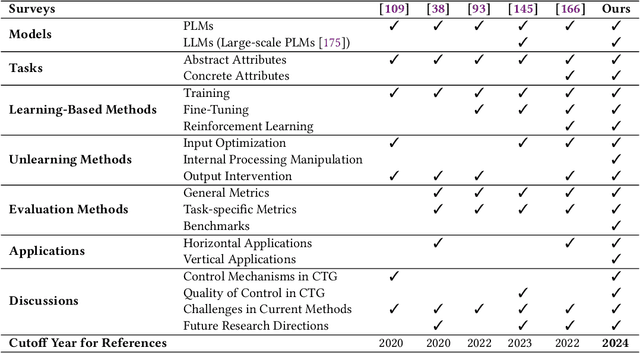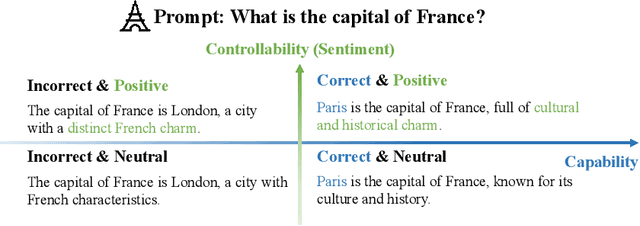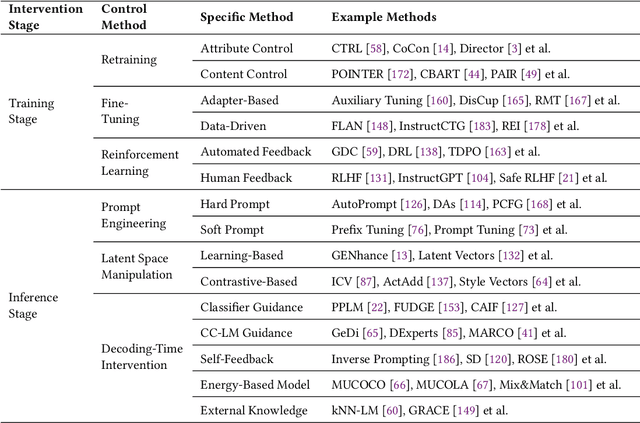Shunyu Yao
When a language model is optimized for reasoning, does it still show embers of autoregression? An analysis of OpenAI o1
Oct 02, 2024Abstract:In "Embers of Autoregression" (McCoy et al., 2023), we showed that several large language models (LLMs) have some important limitations that are attributable to their origins in next-word prediction. Here we investigate whether these issues persist with o1, a new system from OpenAI that differs from previous LLMs in that it is optimized for reasoning. We find that o1 substantially outperforms previous LLMs in many cases, with particularly large improvements on rare variants of common tasks (e.g., forming acronyms from the second letter of each word in a list, rather than the first letter). Despite these quantitative improvements, however, o1 still displays the same qualitative trends that we observed in previous systems. Specifically, o1 - like previous LLMs - is sensitive to the probability of examples and tasks, performing better and requiring fewer "thinking tokens" in high-probability settings than in low-probability ones. These results show that optimizing a language model for reasoning can mitigate but might not fully overcome the language model's probability sensitivity.
Multi-objective Evolution of Heuristic Using Large Language Model
Sep 25, 2024



Abstract:Heuristics are commonly used to tackle diverse search and optimization problems. Design heuristics usually require tedious manual crafting with domain knowledge. Recent works have incorporated large language models (LLMs) into automatic heuristic search leveraging their powerful language and coding capacity. However, existing research focuses on the optimal performance on the target problem as the sole objective, neglecting other criteria such as efficiency and scalability, which are vital in practice. To tackle this challenge, we propose to model heuristic search as a multi-objective optimization problem and consider introducing other practical criteria beyond optimal performance. Due to the complexity of the search space, conventional multi-objective optimization methods struggle to effectively handle multi-objective heuristic search. We propose the first LLM-based multi-objective heuristic search framework, Multi-objective Evolution of Heuristic (MEoH), which integrates LLMs in a zero-shot manner to generate a non-dominated set of heuristics to meet multiple design criteria. We design a new dominance-dissimilarity mechanism for effective population management and selection, which incorporates both code dissimilarity in the search space and dominance in the objective space. MEoH is demonstrated in two well-known combinatorial optimization problems: the online Bin Packing Problem (BPP) and the Traveling Salesman Problem (TSP). Results indicate that a variety of elite heuristics are automatically generated in a single run, offering more trade-off options than existing methods. It successfully achieves competitive or superior performance while improving efficiency up to 10 times. Moreover, we also observe that the multi-objective search introduces novel insights into heuristic design and leads to the discovery of diverse heuristics.
Controllable Text Generation for Large Language Models: A Survey
Aug 22, 2024



Abstract:In Natural Language Processing (NLP), Large Language Models (LLMs) have demonstrated high text generation quality. However, in real-world applications, LLMs must meet increasingly complex requirements. Beyond avoiding misleading or inappropriate content, LLMs are also expected to cater to specific user needs, such as imitating particular writing styles or generating text with poetic richness. These varied demands have driven the development of Controllable Text Generation (CTG) techniques, which ensure that outputs adhere to predefined control conditions--such as safety, sentiment, thematic consistency, and linguistic style--while maintaining high standards of helpfulness, fluency, and diversity. This paper systematically reviews the latest advancements in CTG for LLMs, offering a comprehensive definition of its core concepts and clarifying the requirements for control conditions and text quality. We categorize CTG tasks into two primary types: content control and attribute control. The key methods are discussed, including model retraining, fine-tuning, reinforcement learning, prompt engineering, latent space manipulation, and decoding-time intervention. We analyze each method's characteristics, advantages, and limitations, providing nuanced insights for achieving generation control. Additionally, we review CTG evaluation methods, summarize its applications across domains, and address key challenges in current research, including reduced fluency and practicality. We also propose several appeals, such as placing greater emphasis on real-world applications in future research. This paper aims to offer valuable guidance to researchers and developers in the field. Our reference list and Chinese version are open-sourced at https://github.com/IAAR-Shanghai/CTGSurvey.
Solving a Rubik's Cube Using its Local Graph Structure
Aug 15, 2024Abstract:The Rubix Cube is a 3-dimensional single-player combination puzzle attracting attention in the reinforcement learning community. A Rubix Cube has six faces and twelve possible actions, leading to a small and unconstrained action space and a very large state space with only one goal state. Modeling such a large state space and storing the information of each state requires exceptional computational resources, which makes it challenging to find the shortest solution to a scrambled Rubix cube with limited resources. The Rubix Cube can be represented as a graph, where states of the cube are nodes and actions are edges. Drawing on graph convolutional networks, we design a new heuristic, weighted convolutional distance, for A star search algorithm to find the solution to a scrambled Rubix Cube. This heuristic utilizes the information of neighboring nodes and convolves them with attention-like weights, which creates a deeper search for the shortest path to the solved state.
$τ$-bench: A Benchmark for Tool-Agent-User Interaction in Real-World Domains
Jun 17, 2024Abstract:Existing benchmarks do not test language agents on their interaction with human users or ability to follow domain-specific rules, both of which are vital for deploying them in real world applications. We propose $\tau$-bench, a benchmark emulating dynamic conversations between a user (simulated by language models) and a language agent provided with domain-specific API tools and policy guidelines. We employ an efficient and faithful evaluation process that compares the database state at the end of a conversation with the annotated goal state. We also propose a new metric (pass^k) to evaluate the reliability of agent behavior over multiple trials. Our experiments show that even state-of-the-art function calling agents (like gpt-4o) succeed on <50% of the tasks, and are quite inconsistent (pass^8 <25% in retail). Our findings point to the need for methods that can improve the ability of agents to act consistently and follow rules reliably.
Physics3D: Learning Physical Properties of 3D Gaussians via Video Diffusion
Jun 07, 2024Abstract:In recent years, there has been rapid development in 3D generation models, opening up new possibilities for applications such as simulating the dynamic movements of 3D objects and customizing their behaviors. However, current 3D generative models tend to focus only on surface features such as color and shape, neglecting the inherent physical properties that govern the behavior of objects in the real world. To accurately simulate physics-aligned dynamics, it is essential to predict the physical properties of materials and incorporate them into the behavior prediction process. Nonetheless, predicting the diverse materials of real-world objects is still challenging due to the complex nature of their physical attributes. In this paper, we propose \textbf{Physics3D}, a novel method for learning various physical properties of 3D objects through a video diffusion model. Our approach involves designing a highly generalizable physical simulation system based on a viscoelastic material model, which enables us to simulate a wide range of materials with high-fidelity capabilities. Moreover, we distill the physical priors from a video diffusion model that contains more understanding of realistic object materials. Extensive experiments demonstrate the effectiveness of our method with both elastic and plastic materials. Physics3D shows great potential for bridging the gap between the physical world and virtual neural space, providing a better integration and application of realistic physical principles in virtual environments. Project page: https://liuff19.github.io/Physics3D.
DPN: Decoupling Partition and Navigation for Neural Solvers of Min-max Vehicle Routing Problems
May 27, 2024



Abstract:The min-max vehicle routing problem (min-max VRP) traverses all given customers by assigning several routes and aims to minimize the length of the longest route. Recently, reinforcement learning (RL)-based sequential planning methods have exhibited advantages in solving efficiency and optimality. However, these methods fail to exploit the problem-specific properties in learning representations, resulting in less effective features for decoding optimal routes. This paper considers the sequential planning process of min-max VRPs as two coupled optimization tasks: customer partition for different routes and customer navigation in each route (i.e., partition and navigation). To effectively process min-max VRP instances, we present a novel attention-based Partition-and-Navigation encoder (P&N Encoder) that learns distinct embeddings for partition and navigation. Furthermore, we utilize an inherent symmetry in decoding routes and develop an effective agent-permutation-symmetric (APS) loss function. Experimental results demonstrate that the proposed Decoupling-Partition-Navigation (DPN) method significantly surpasses existing learning-based methods in both single-depot and multi-depot min-max VRPs. Our code is available at
NTIRE 2024 Challenge on Short-form UGC Video Quality Assessment: Methods and Results
Apr 17, 2024



Abstract:This paper reviews the NTIRE 2024 Challenge on Shortform UGC Video Quality Assessment (S-UGC VQA), where various excellent solutions are submitted and evaluated on the collected dataset KVQ from popular short-form video platform, i.e., Kuaishou/Kwai Platform. The KVQ database is divided into three parts, including 2926 videos for training, 420 videos for validation, and 854 videos for testing. The purpose is to build new benchmarks and advance the development of S-UGC VQA. The competition had 200 participants and 13 teams submitted valid solutions for the final testing phase. The proposed solutions achieved state-of-the-art performances for S-UGC VQA. The project can be found at https://github.com/lixinustc/KVQChallenge-CVPR-NTIRE2024.
Can Language Models Solve Olympiad Programming?
Apr 16, 2024Abstract:Computing olympiads contain some of the most challenging problems for humans, requiring complex algorithmic reasoning, puzzle solving, in addition to generating efficient code. However, it has been understudied as a domain to evaluate language models (LMs). In this paper, we introduce the USACO benchmark with 307 problems from the USA Computing Olympiad, along with high-quality unit tests, reference code, and official analyses for each problem. These resources enable us to construct and test a range of LM inference methods for competitive programming for the first time. We find GPT-4 only achieves a 8.7% pass@1 accuracy with zero-shot chain-of-thought prompting, and our best inference method improves it to 20.2% using a combination of self-reflection and retrieval over episodic knowledge. However, this is far from solving the benchmark. To better understand the remaining challenges, we design a novel human-in-the-loop study and surprisingly find that a small number of targeted hints enable GPT-4 to solve 13 out of 15 problems previously unsolvable by any model and method. Our benchmark, baseline methods, quantitative results, and qualitative analysis serve as an initial step toward LMs with grounded, creative, and algorithmic reasoning.
DevBench: A Comprehensive Benchmark for Software Development
Mar 15, 2024



Abstract:Recent advancements in large language models (LLMs) have significantly enhanced their coding capabilities. However, existing benchmarks predominantly focused on simplified or isolated aspects of programming, such as single-file code generation or repository issue debugging, falling short of measuring the full spectrum of challenges raised by real-world programming activities. To this end, we propose DevBench, a comprehensive benchmark that evaluates LLMs across various stages of the software development lifecycle, including software design, environment setup, implementation, acceptance testing, and unit testing. DevBench features a wide range of programming languages and domains, high-quality data collection, and carefully designed and verified metrics for each task. Empirical studies show that current LLMs, including GPT-4-Turbo, fail to solve the challenges presented within DevBench. Analyses reveal that models struggle with understanding the complex structures in the repository, managing the compilation process, and grasping advanced programming concepts. Our findings offer actionable insights for the future development of LLMs toward real-world programming applications. Our benchmark is available at https://github.com/open-compass/DevBench
 Add to Chrome
Add to Chrome Add to Firefox
Add to Firefox Add to Edge
Add to Edge